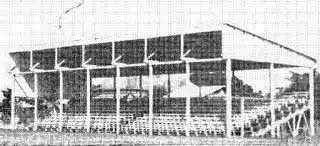History of the RAAM CALABARZON (Formerly STAA/STRAA/STCAA))
In the present day, each year a competition is held to select teams and athletes who will represent Region IV-A in the national games called Palarong Pambansa. These teams and athletes come from the provinces of Cavite, Laguna, Batangas, Rizal and Quezon, otherwise known collectively as the CALABARZON.
Prior to 20021, the Region IV was much larger and included the island provinces of what is now known as MIMAROPA, made up of the provinces of Oriental and Occidental Mindoro; Marinduque; Romblon; and Palawan. Aurora was also still part of the region. Then, the annual meet was called the Southern Tagalog Regional Athletic Association or the STRAA.
Both associations trace their roots to a much humbler meet organized early during the American colonial era, the Southern Tagalog Athletic Association (STAA). The association was formed in 1910 by the provinces of Bataan, Rizal, Tayabas, Cavite and Batangas. The first-ever meet was held the in March of the following year in the town of Sta. Cruz in Laguna. There were just two events: baseball, won by Cavite; and athletics, won by Laguna. Batangas and Bataan did not participate2.
“The people had not been accustomed to strenuous sports and could see no particular reason why they should tire themselves out in such games when diversions of a less fatiguing nature were at hand3.”
Interest in sports shot up when teachers themselves started participating. In Batangas, in particular, teachers were first introduced to the game while training in normal schools – schools for teacher training.
In his narrative published as part of the 1903 Report of the Philippine Commission, M.A. Molton, Superintendent of the Division of Batangas, Cavite and Tayabas noted that “young men played baseball” after training, and that the games were used to enhance use of the English language. He also noted that “baseball was a good way to interest the children in school4.”
“It was not until the rivalry between towns and provinces was stirred up that a deep and general interest in every form of sport was developed. Baseball, of course, came first, for there was something in it that appealed to the theatrical instinct. It was not long, however, before track and field athletics began to engage the attention of the people everywhere, and in certain districts these at least divided interest with baseball5.”
Although Batangas did not participate in the first-ever STAA, its teams were active elsewhere. For instance, in 1906-1907, a team from Batangas High School participated in and won a baseball series involving the Philippine School of Arts & Trade, Liceo and Tarlac High School6.
The source document does not make it clear exactly when Batangas started to participate in the STAA, but the province hosted the meet in January of 1913. Its team won the baseball competition, with Laguna being triumphant in athletics7.
A word about basketball, which all readers know would eventually become the most popular spectator and participative sport in the Philippines. It was, in fact, introduced to the country much later than baseball, and “except in the Visayas it has received little attention from the boys8.”
In fact, just so more students would pick up basketball as a sport, the Bureau of Education as an incentive offered a basketball outfit (likely equipment and facility) to “the school in each division winning the greatest number of games in a provincial baseball series9.” By 1913, Batangas fielded a basketball team in the so-called “carnival meets,” athletic competitions held between towns and provinces during carnival seasons in different towns and cities.
2 “Athletic Handbook for the Philippine Public Schools,” by the Bureau of Education, published 1911 in Manila, p. 45.
3 Bureau of Education, p. 39.
4 “Division of Batangas: Fourth Annual Report of the Philippine Commission,” compiled by the Philippine Commission, published 1904 in Washington DC.
5 Bureau of Education, ibid.
6 Bureau of Education, op. cit. p. 42.
7 Bureau of Education, op. cit. p. 53.
8 Bureau of Education, op. cit. p. 45
9 Bureau of Education, op. cit. p. 46.


